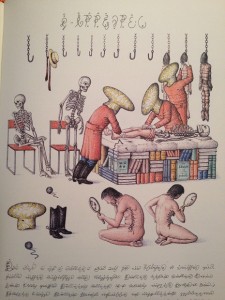Amazing 9,000 year old flutes found in China
M. J.’s novel THE MEMORIST centers around the hunt for an ancient flute made out of bone that looked just like these and were just about as old…
9,000 year-old-flutes found in China
“Researchers in China have discovered six complete ancient flutes made of bone belonging to the Neolithic period carbon dated to about 9,000 years old. Fragments of many more flutes were found in the same area too. The flutes are complete playable flutes made of the bones of the red-crowned crane with five to eight holes. The area that they were discovered is Jiahu of the mid-Henan Province.
What is interesting is that the music played through the seven holes correspond to a tonal scale extremely similar to the eight note scale used today. Although this sounds like a minor detail it is a very important discovery that is also quite amazing. The seven musical notes that we use today and the tone scale used have harmony that is distinct and is based on complex acoustic properties. Is it coincidence that whoever made those 9,000 years old flutes and generally people from all over the world (Africa, Asia, and Europe) were able to come up with scales reflecting all these acoustic properties just by simple chance?…”
See more here.
Share



